The Mystique of Asian Women in Literary Fiction
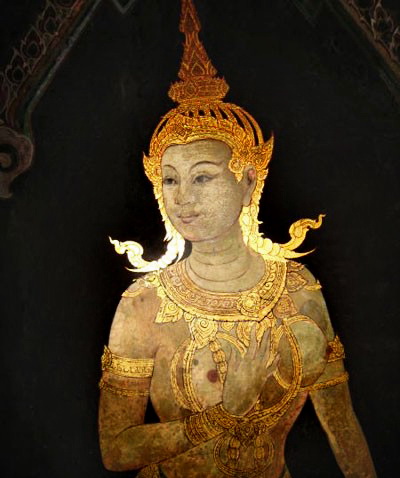
Between the covers of countless books lurks a mystical creature with multiple masks…
Submissive and beautiful.
Cunning and domineering.
Shy virgin. Adventurous lover.
She is the Asian woman…
Or rather what passes for her in fiction.
Author and Jakarta Post reporter Sara Veal lifts the veil on the inscrutable images in
The Mystique of Asian Women
* * *
For thousands of years, ever since the West encountered the East, an exotic vision of the Asian woman has inhabited Western literature, symbolizing the allure, danger and mystery of the unknown.
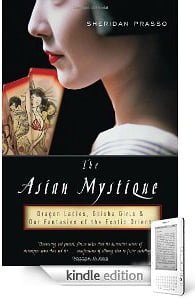
“In the Western mind, the fictional image of the ‘Asian woman’ is the most imagined, misunderstood and ‘fetishized’,” says Sheridan Prasso, author of The Asian Mystique: Dragon Ladies, Geisha Girls, and Our Fantasies of the Exotic Orient (2006), adding this ultra-feminine exoticism has been juxtaposed onto the Asian male, “effectively wiping out his masculinity in Western culture”.
Academic Elaine Kim writes in a similar vein, observing “the inscription in American popular culture of Asian men as sexless automatons is complemented by the popular view of Asian women as only sexual beings, which helps explain … the enormous demand for X-rated films featuring Asian women in bondage, the demand for ‘Oriental’ bathhouse workers in US cities, and the booming business in mail-order marriages”.

Such sexual overtones are evident in the dichotomy of the Asian woman in literature. Whether Chinese, Japanese, Thai, Filipina, Indonesian, Malaysian, Vietnamese, Khmer, Laotian, Korean or Burmese, the East and Southeast Asian woman is either Dragon Lady – seductive, dominant – or Geisha Girl – subservient, ornamental. Between these two extremes lie permutations like China Doll, Lotus Flower, Prostitute and Mail-order Bride, all with sexual connotations.
The term Dragon Lady is thought to have originated in American cartoonist Milton Caniff’s 1930s comic strip Terry and the Pirates, and since then applied repeatedly to powerful Asian woman such as Soong May-ling, wife of former Taiwanese president Chiang Kai-Shek, and the no-nonsense dominatrix Ling Woo (played by Lucy Liu) in television’s Ally McBeal.
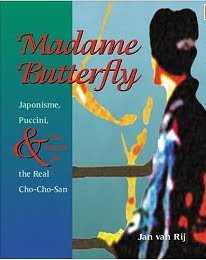
by Jan van Rij.
The Geisha Girl of Western popular imagination has its roots in the eponymous heroine of Giacomo Puccini’s Madame Butterfly, a delicate creature who kills herself when abandoned by her American lover. Puccini’s play was likely based on novelist Pierre Loti’s Madame Chrysanthème, in which the “hero” fails to understand or master the geisha of the title. Both versions demonstrate the heroine’s otherness, but the opera strongly implies Western superiority over a submissive Asia.
Representing Asia is a common function of the Asian woman in colonial literature. Between 1900 and 1940, French novels on Southeast Asia were often named for their native female character, as in Roland Meyer’s Saramani, Danseuse Cambodgienne (Saramani, Cambodian Dancer).

In such novels, French scholar Patrick Laude observes, “the Frenchman’s contact with natives … often leads to his adoption of Asian culture and repudiating of Western culture” – the Asian women were at once “Asia herself” and “Asian Eves” tempting Western men to the other side.
An Asian Eve appears in W. Somerset Maugham’s 1924 short story The Letter, based on a true scandal in Kuala Lumpur, in which the wife of a headmaster shot a male friend. The victim, Geoff Hammond, had married a Chinese woman, which lost him favor with the expatriate community. Despite her importance to the plot, his wife lacks a direct voice and is simply referred to as “Mrs. Hammond”. She is described as neither beautiful nor young – evidently not a Geisha Girl, her cunning actions and desire for revenge situate her as a Dragon Lady.
However, the beauty and ultra-femininity of Asian woman is often at the fore of their exoticism, so much so that white female literary heroines sometimes had to resort to yellow-face to redress the balance. In Owen Hall’s 1896 play The Geisha, a Story of a Tea House, an Englishwoman, spurned by her soldier fiancé for a Japanese geisha, wins him back by donning a kimono and makeup to match.

Men weren’t the only ones contributing to the Asian mystique. Anna Leonowens, a British governess who spent time in King Mongkut’s court in the 19th century, wrote two memoirs, The English Governess at the Siamese Court (1870) and The Romance of Harem (1873), which condemned her former employer’s harem, ostensibly in support of feminism.
Yet in pointing out the harem’s evils, she imbued it with exoticism, alluding to “heavy curtains of silk and gold”, and infantilized and insulted the Thai women she meant to stand up for, describing them as having “childish minds” and the potential to be attractive “but for their ingeniously ugly mode of clipping the hair and blackening the teeth”. Her observations inspired the Hollywood hit The King and I, which remains officially banned in Thailand due to the offensive portrayal of the revered King Mongkut.
“Leonowens sets up an Orientalizing framework of the Thai woman as oppressed and overly sexualized – one that then plays out in post-Vietnam War fantasies of Thailand to be found in, for example, Michel Houellebecq’s 2001 book Platform,” says Rachel Harrison, head of the Southeast Asian department at the University of London’s School of Oriental and African Studies and co-author of the upcoming The Ambiguous Allure of the West and the Making of Thai Identities.
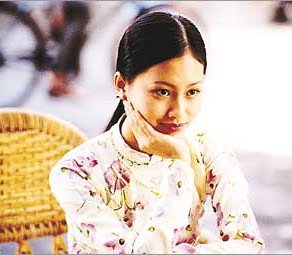
Indeed, even as – and perhaps especially as – colonialism lost its grip on Asia in the mid-20th century, stereotypes of Asian women persisted and were eagerly lapped up by Western readers, with the Prostitute (with a heart of gold) in Richard Mason’s 1957 novel The World of Suzie Wong, and the Geisha Girl in Graham Greene’s The Quiet American(1955).
In Greene’s novel, middle-aged British journalist Thomas Fowler and young American idealist Alden Pyle quietly tussle over the most beautiful girl in Saigon. The lovely and inscrutable Phuong is Saigon herself, caught between two colonial powers – the older, entrenched Europe and the radical America – waiting to see which will benefit her the most.
Around the same time, Asian women began to speak for themselves in Western literature, mainly through autobiography and history, suggesting that the best weapon against Orientalist fiction was well-articulated fact.
One of the earliest of such texts was Jade Snow Wong’s Fifth Chinese Daughter (1950), which proved so popular that the US State Department sent the author to 45 Asian locales between Tokyo and Karachi.
“I was sent,” Wong writes, “because those Asian audiences who had read translations of Fifth Chinese Daughter did not believe a female born to poor Chinese immigrants could gain a toehold among prejudiced Americans.”

Maxine Hong Kingston’s 1975 memoir, The Woman Warrior: Memoirs of a Girlhood Among Ghosts, sought to present a nuanced account of 20th-century Chinese-Americans living in the US in the shadow of the Chinese revolution. However, reflecting ingrained, sweeping assumptions about Asian women, at least one reviewer found this ambiguity too perplexing.
“It’s hard to tell where her fantasies end and reality begins,” Michael Malloy wrote for the National Observer in 1976, confused by Kingston describing some Chinese women as aggressive and talkative and others as docile and silent.
Still, even these Asian women speaking for themselves may be responsible for perpetuating the Asian mystique, as their critics argue.
Kim suggests that Wong’s autobiography was “valued primarily as evidence that American racial minorities have only themselves to blame for their failure in American life”, an important view “during the Cold War period, when charges of race discrimination in the United States were circulating in developing countries that, having recently been freed from direct colonial rule, were questioning the value of American world leadership”.

Playwright Frank Chin, in his 1991 essay “Come all ye Asian American writers of the real and the fake”, claims Kingston and Amy Tan, who wrote The Joy Luck Club (1989), faked Chinese literature and history to further Western misconceptions about Asia.
Chin criticizes Tan for opening her novel with a fake Chinese fairytale about “a duck that wants to be a swan and a mother who dreams of her daughter being born in America, where she’ll grow up speaking perfect English and no one will laugh at her” and where a “woman’s worth is [not] measured by the loudness of her husband’s belch”, and Kingston’s rewriting of Chinese folk heroine Fa Mulan “to the specs of the stereotype of the Chinese woman as a pathological white supremacist victimized and trapped in a hideous Chinese civilization”.
He goes on to suggest that Kingston and Tan were only published because they were Christians: “… the only form of literature written by Chinese Americans that major publishers will publish (other than the cookbook) is autobiography”, and “… they all write to the specifications of the Christian stereotype of Asia being as opposite morally from the West as it is geographically”.

“Self-Orientalization complies with existing stereotypes,” Harrison explains, “the Orientalized subject absorbs this dominant sense of self-identity and uses it as a way of marketing to the outside world, remaining within understandable and understood frames of reference.”
Perhaps due to a relative lack of self-Orientalizing/culture-counterfeiting, fellow Asian women writer Jung Chang has provoked less ire from her peers with Wild Swans (1991).
British citizen Jung Chang’s phenomenally well-received autobiographical novel spanned three generations of Chinese women in the 20th century, painting a vivid portrait of the period’s political and military turmoil, and was deemed by Tasmanian academic Kaz Ross to be a forerunner to the “faction” genre – “history told by fictional narrative means”.
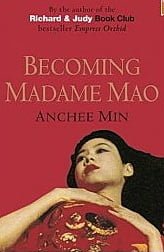
Continuing the factual crusade against stereotyping, Chinese-American Anchee Min’s novels focus on strong female figures. Jiang Qing, Mao Zedong’s wife, is given a rounded portrayal in Becoming Madame Mao (1991), while Empress Orchid (2004) offers a sympathetic account of Empress Dowager Cixi, de facto ruler of the Mancu Qing Dynasty for 48 years between 1861 to her death in 1908, who has often been portrayed as a Dragon Lady in Western cinema.
Male Asian writers have also risen to challenge the Asian mystique. David Henry Hwang’s Tony-winning play M. Butterfly (1988), loosely based on the relationship between French diplomat Bernard Bouriscot and male Peking opera singer Shi Pei Pu, subverts Puccini’s opera to tragicomic effect.

Gallimard, based on Bouriscot, becomes taken with opera diva Song Liling, whom he idealizes as the perfect woman. “She”, however, is a man, and a Chinese spy to boot, and ruins the diplomat’s name and breaks his heart. “Only a man knows how a woman is supposed to act,” Song informs his deluded lover, who shortly commits suicide, in a mirror of the original Butterfly.
Beyond Chinese dominance when it comes to East and Southeast Asians in Western literature, a wider range of female voices across Asia are beginning to be heard (or read) in Western press, such as in the recent, and aptly titled, Speaking for Myself: An Anthology of Asian Women’s Writings, which offers nuanced tales of the epic in the everyday, moving away from simple history and autobiography.
Such stories are needed to counter stereotypes that continue to crop up in popular Western literature, from the unseen Dragon Lady that is Mark Darcy’s Japanese ex-wife in Bridget Jones’ Diary (1996) to the Geisha Girl/Prostitute Chinese mistress in Tony Parson’s My Favorite Wife (2008), as well as the more overt Orientalization in Arthur Golden’s best-selling Memoirs of a Geisha (1997).

In a sign of the Asian woman being able to directly challenge her misrepresentation, Mineko Iwasaki, who reportedly inspired the memorable geisha, revealed in an interview with Prasso her distaste for the novel’s “misinterpretation” of her “flower and willow world”.
As Iwasaki and Prasso show, the Asian woman of Western popular imagination remains curiously mistaken and outdated in a world where Asian countries are increasingly powerful and Asian women are leading the way.
Presidents, lawyers, doctors, human rights defenders, teachers, writers, mothers, daughters. These are the true women of Asia. It’s time to turn the page on the Asian mystique.
–

About the Author
Sara Veal is a freelance journalist based in Jakarta.
As a child, she grew up in Nigeria and Cambodia before moving to UK to complete her BA and MA.
Her travels apparently inspired a taste for exotic adventure and Sara now reviews films and books, writes about entertainment and culture, and profiles personalities from her Indonesian home with a focus on Southeast Asia.
Visit her website at SaraVeal.com
